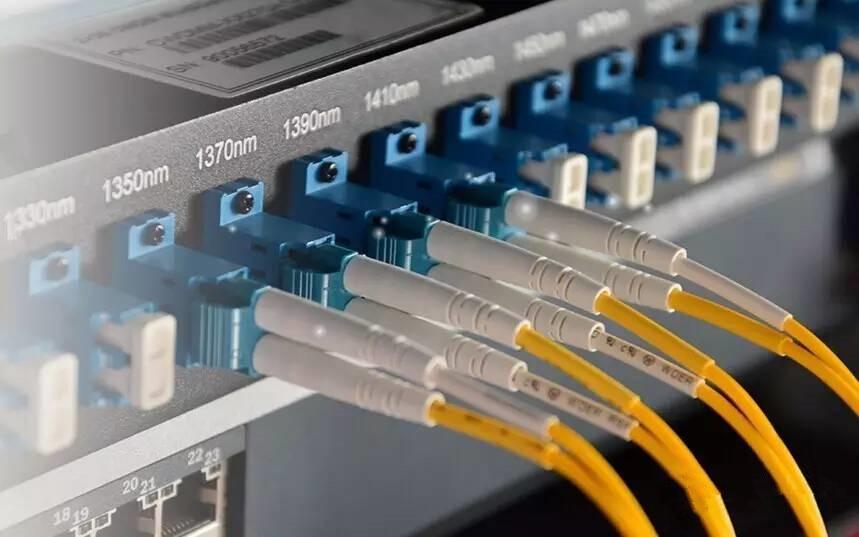- Related articles
- Cisco Catalyst 6500 WS-X6816-GBIC Expansion Module 16-Port Gigabit Ethernet
- All Cisco GLC-BX40-DA-I's information (List price, Specs, Datasheet PDF, Compatibility mat
- Optical Transceivers for Cisco WS-C2960-24PC-S Switch
- The difference between SFP+ and CSFP
- Optical Transceivers for Cisco WS-C2960S-48FPS-L Switch
- All Cisco ONS-XC-10G-I2's information (List price, Specs, Datasheet PDF, Compatibility mat
- All Cisco DWDM-XENPAK-60.61's information (List price, Specs, Datasheet PDF, Compatibility
- What Is 1000 Mbps Network Card?
- Optical Transceivers for Cisco SG355-10P-K9-UK Switch
- Optical Transceivers for Cisco WS-C3650-24TS-L Switch

For the need of improvement of network transmission systems, and network transmission ways of cost savings, time and effort, the coarse wavelength division multiplexer/demultiplexer (CWDM MUX/DEMUX) is undoubtedly is a cost-effective solution.

Brief Introduction to CWDM MUX/DEMUX
The coarse wavelength division multiplexer is a technology that achieves multiplexing of different signals on a single fiber by using light with different laser wavelengths.
A coarse wavelength division multiplexer/demultiplexer can maximize the capacity of a single fiber or duplex fiber to increase the bandwidth. It can put the signals of different wavelengths into a single fiber, and at the end of the link split into the original signal again in order to reduce the number of fiber jumpers required and obtain other independent data links.
The coarse wavelength division multiplexer/demultiplexer box has the bandwidth from 2 channels to 18 channels in the 1RU 19 "chassis. The following is an example of a 9-channel 1290-1610nm single fiber coarse wavelength division multiplexer/demultiplexer. The following is a 1/2 19 "box with the binding head LC / UPC.
Features
① supporting up to 9 data flows
② wavelength range: 1260 ~ 1620nm
③ low insertion loss, 1/2 1RU 19 "classical box-type chassis design
④ adopting passive technology, no power
⑤ LC / UPC simplex circuit connection port
⑥ LC / UPC duplex CWDM channel port, easily supporting the plug-in duplex jumper connection between transceiver and passive devices.
⑦ Operating temperature: 0 ~ 70 ℃
⑧ Storage temperature: -40 ~ 85 ℃
Pre-installation Preparation
You only need to use 9 / 125μm duplex single-mode fiber jumpers and easily connect the coarse wavelength division multiplexer/demultiplexer. The optical module is allowed to cover wavelengths of 1290 nm, 1370 nm, 1410 nm, 1450 nm, 1490 nm, 1530 nm, 1570 nm and 1610 nm. At the same time, this device needs to be used with 9 CWDM-2759-LC-LGX-SFB.
To ensure a long-term safe and reliable operation, please note the following:
1. Please use in a dry indoor environment.
2. Do not put the coarse wavelength multiplexer/demultiplexer in a closed space where that the air does not flow will lead to too high chassis temperature.
3. Do not place the power directly at the top of the cell.
4. Do not block the ventilation holes in the equipment.
System Installation Process
1. Close all devices before installing the coarse wavelength division multiplexer/demultiplexer system.
2. Install the coarse wave splitter module, remember that each channel carries the only optical module with a specific wavelength. Therefore, each optical module must be inserted into a specific channel and used only once in the system. The transmission and receiving wavelengths at both ends of the optical module must be consistent.
3, the use of single-mode fiber jumper connected to the coarse wavelength multiplexer/demultiplexer, you should first check whether the fiber interface is contaminated. Keep the fiber interface clean to ensure more stable network performance.
Notes:
① When the optical module is not in use, the fiber jumper must be installed with a dust cap, otherwise the optical fiber jumper and optical module docking, easily lead to light module contamination.
② Check often whether the fiber jumper is damaged.
③ When making the connection, make sure that the fiber interface is clean.
4. Open the system power.
Troubleshooting methods:
When you connect the system without data flow, you need to do as follows:
1. Use a short fiber jumper directly to connect the cells on the coarse wavelength division multiplexer/demultiplexer to check.
2. Check whether the fiber jumpers and optical connectors are damaged.
3. Ensure that the wavelength on the coarse wavelength division multiplexer/demultiplexer is transmitted only once.
4. Check whether the optical module is inserted into the port specified by the coarse wavelength division multiplexer/demultiplexer.
Conclusion
The coarse wavelength division multiplexer/demultiplexer is a cost-effective solution that can expand bandwidth capacity and shorten link communication. In addition to cost savings, CWDM lasers consume less energy and take up less space.





































































